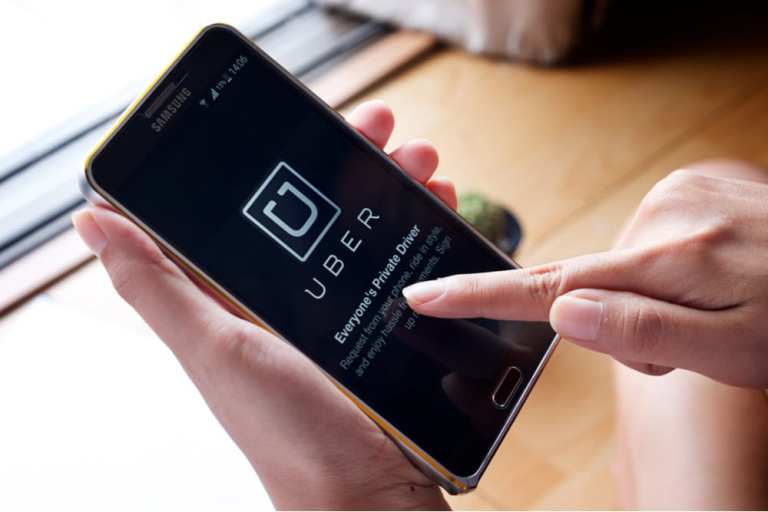Can Uber Change The Subscription Game Too?

You have probably noticed, but in case you haven’t, let’s just state the blunt truth: When it comes to subscription commerce, one of the hottest areas of payments and retail, things are getting brutal out there. Actually, not just brutal, but almost existential, in a fight-for-dominance type of way. At least that’s the view in the immediate aftermath of Uber’s debut of its own subscription commerce offering.
Uber may not be dazzling some investors as much as they would prefer in its new status as a public company, but the ride-sharing pioneer keeps racing to its next innovation. As discussed in a new PYMNTS interview featuring Karen Webster and Dan Burkhart, CEO and co-founder of subscription commerce company Recurly, Uber’s new subscription offering is a strategic move designed for market dominance – and represents a significant change when it comes to uses of subscription commerce in general.
“What they are doing,” Burkhart said, speaking of Uber, “is asking ambivalent riders to declare their affinity. This is a zero-sum game.” The fight between Uber and Lyft, another new public company – to say nothing of all those other mobile-focused food delivery operations that compete with Uber – might not exactly be the Jets vs. the Sharks. But no matter – Uber’s introduction of its subscription offering in late July does serve notice that the game is changing.
Uber Proposition
So what, exactly, is Uber doing with subscriptions?
As PYMNTS covered, the company is testing a monthly subscription pass that would allow access to rides, scooters, bikes and food, using a set monthly fee to try to tie its existing and new customers into the ever-expanding Uber ecosystem. The pass, which costs $24.99 per month, offers a fixed discount on rides, free Uber Eats delivery and free rides on JUMP bikes and scooters. Uber is testing various discounts in different cities, including San Francisco and Chicago. Other iterations of the pass include free Uber Eats delivery after a certain price threshold is met.
That’s the what.
The why, according to Burkhart, is that Uber is now engaged in what he called a “fist fight” in the larger ridesharing space – a space that keeps expanding as Uber builds upon its foundation in an effort to assume a bigger role in payments and eCommerce (to say nothing of logistics and other forms of rental transportation).
According to Burkhart, the new Uber subscription model also represents a shift for subscription commerce in general. Traditionally – or, you if prefer, over the last decade or so, during the rise of eCommerce – subscriptions served mainly to lock in a business’ most loyal customers (those willing to a do at least a bit of self-service), and to provide a dependable recurring revenue stream in a relatively efficient manner. Sure, that still holds, but as Burkhart told it, this Uber move shows the company is also making a serious effort to build deeper engagements with those less active or loyal consumers – that is, to get them to pick a side and stay with one provider in this competitive field. As well, the new Uber subscription offering could serve to move consumers from relatively low-margin services such as rideshares to higher-margin propositions like Uber Eats.
Other Services
Indeed, when one thinks about how this Uber subscription effort could progress – which Webster and Burkhart discussed during their PYMNTS discussion – one can map out retail and service activities that take advantage of mobile payment and commerce offerings, as well as the growing ecosystem of connected vehicles.
Say, for instance, that an Uber rider needs his or her caffeine fix during that trip. Uber’s technology – and make no mistake, Burkhart said, Uber is deep into the data analytics on all this – can essentially remember that consumer’s coffee preferences and suggest a detour to a particular coffee shop. As Webster pointed out, that would also increase income for drivers, as they are taking longer trips to satisfy that rider’s need for bean-derived energy.
None of this is meant to suggest that the Uber subscription offering is bulletproof, of course.
During this PYMNTS discussion, Webster and Burkhart took pains to touch on all the ways in which subscription commerce can go wrong – just consider all the problems with MoviePass, among other operations. As for Uber, it seems unlikely that the company, for all its data and analytics, has really hit the precise sweet spot for its subscription pricing – that will come as consumers respond to it over the coming months.
But make no mistake about what’s going on here, Burkhart said: “Uber is elevating the bar – and it’s a battle for share of wallet.”